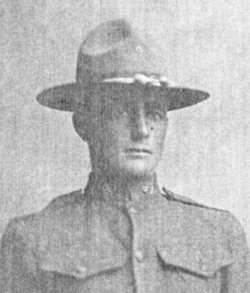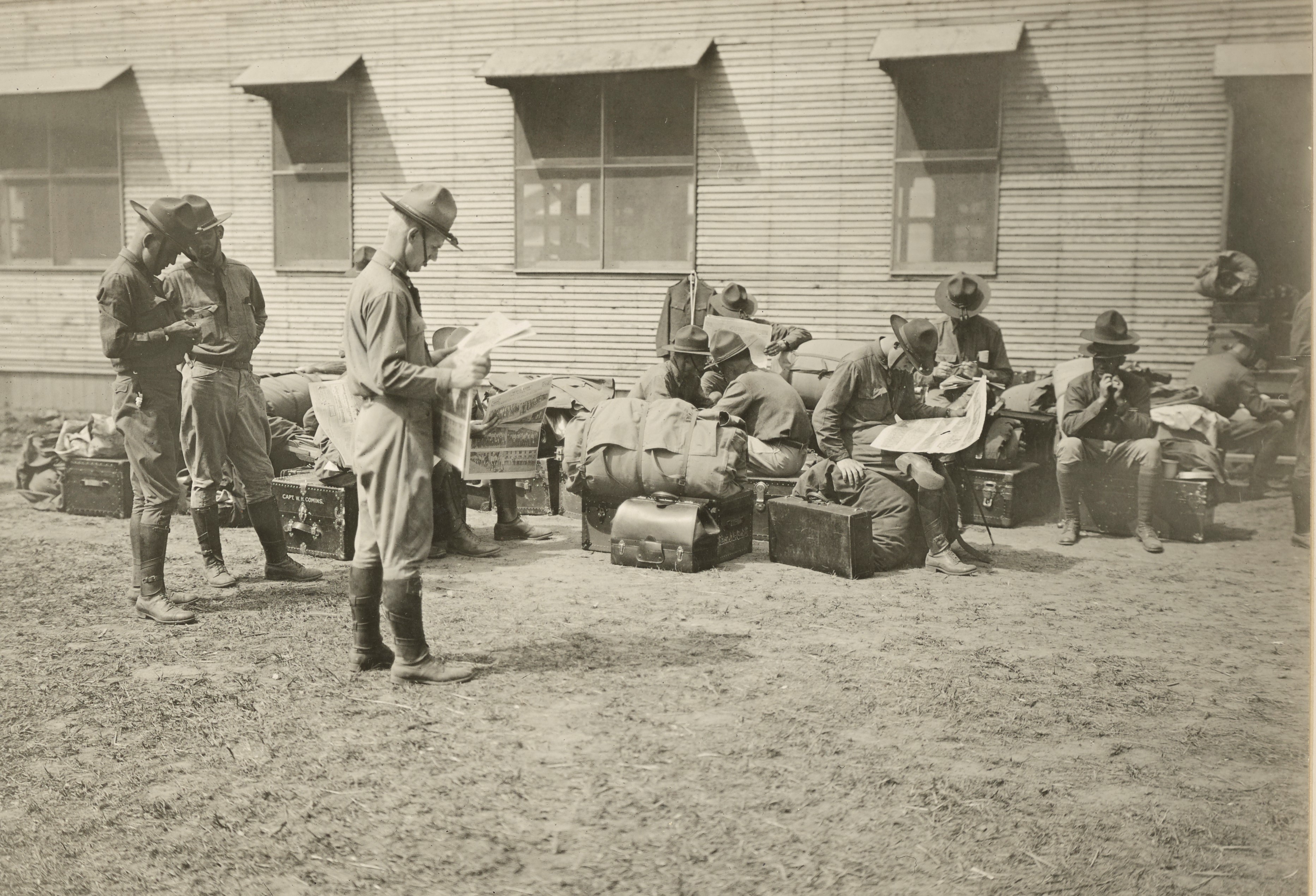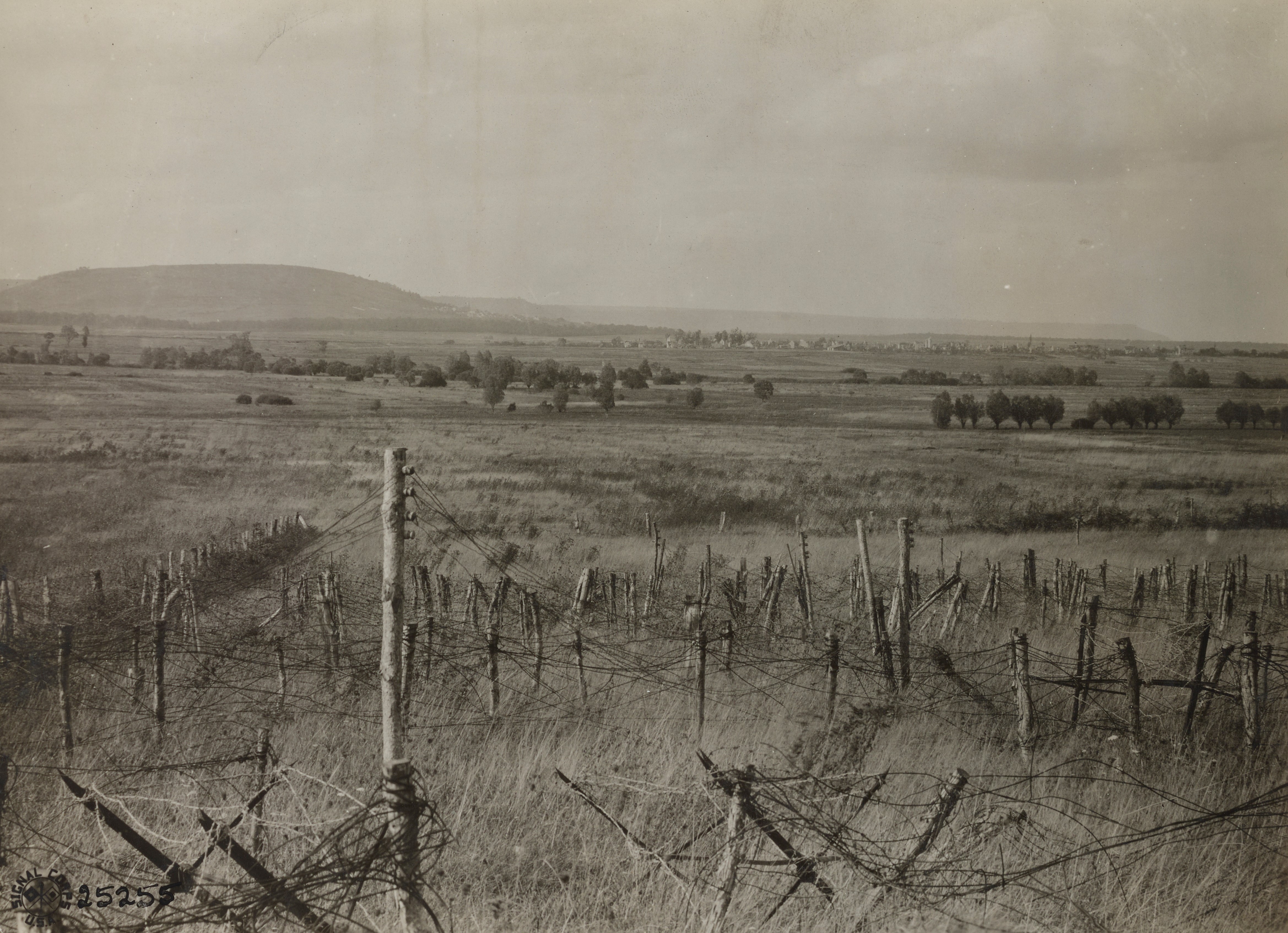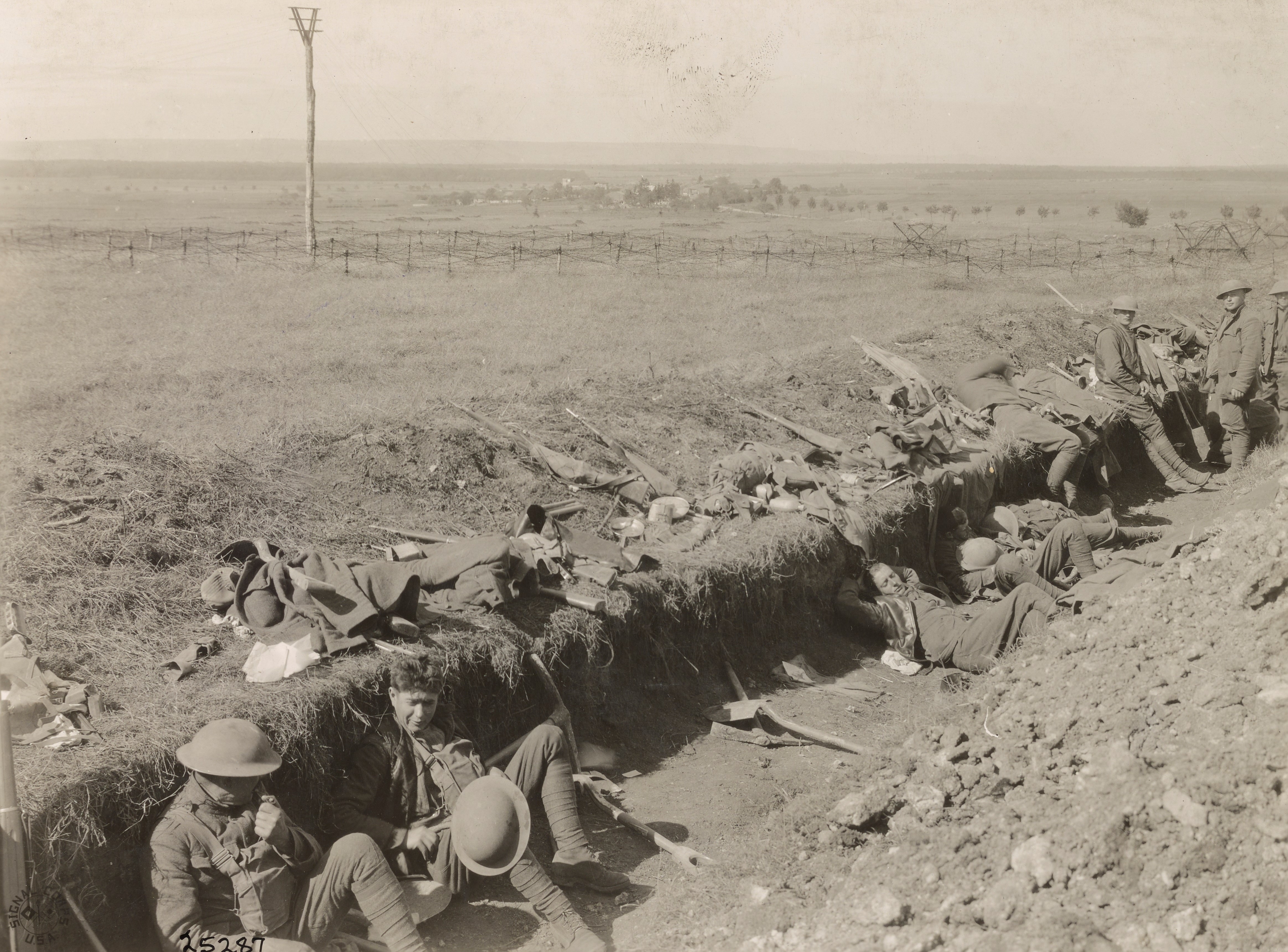Corporal Albert Hohberg

- Unit: 89th Division, 353rd Infantry Regiment, Company D
- Date of Birth: February 29, 1892
- Entered the Military: August 31, 1917
- Date of Death: October 20, 1918
- Hometown: Topeka, Kansas
- Place of Death: near Bantheville Woods, France
- Cemetery: Plot H, Row 19, Grave 25. Meuse-Argonne American Cemetery, Romagne-Sous-Montfaucon, France
Seaman Middle School
2017-2018
Early Life
On February 29, 1892, Albert Hohberg was born to German immigrants Gustav and Margaret Hohberg in Rising Sun, Iowa. Hohberg’s family moved frequently during his youth and eventually settled in North Topeka, Kansas. In Kansas, Albert attended school and worked on the family farm.
Military Experience
Camp Funston
Hohberg enlisted in the U.S. Army in September 1917, a few months after the United States’ entry into World War I. He joined the 353rd Infantry Regiment (“All Kansas”), established on September 5, 1917 as part of the 89th Division (known as the “Rolling W” Division). The 353rd Infantry Regiment was created at Camp Funston, Kansas and was comprised entirely of Kansas soldiers.
The official history of the 353rd Infantry Regiment details the Camp Funston training regimen of drill, target practice, infantry training, training in trench warfare, and a schedule with time allotted for bayonet work, introduction to the French language, and occasional recreation. Training lasted until May 1918, which is when orders came for Hohberg and the rest of the 353rd Infantry Regiment to board a train bound for New York and make their way to France aboard the HMS Karmala.
St. Mihiel Salient
A year after its establishment, the 353rd Infantry Regiment arrived in France along with the rest of the 89th Division fighting in the St. Mihiel campaign. On September 11, 1918, they were ordered to drive through enemy positions to the right of Mort Mare Woods. Hohberg’s D Company was tasked with guarding the left flank.
On September 12, initial bombardments began the Battle of Saint-Mihiel. The 89th Division and 353rd Infantry Regiment were part of IV Corps. After an initial thrust by American forces, IV Corps led a pincer action to clear the area. On September 13, with all objectives reached within the Saint-Mihiel salient, the 353rd Infantry Regiment were withdrawn in preparation for the Meuse-Argonne Offensive.
Meuse-Argonne Offensive
On October 12, 1918, the 353rd Infantry Regiment received reinforcements to bring the unit to fighting strength at nearly 1,000. The next day, the troops began a difficult march toward the front lines of the Meuse-Argonne Offensive. Company D received the following command in Field Order Number 82 on October 19:
“No ground now held will be abandoned, but if necessary to obtain more favorable positions, local advance may be made. The Commander-in-Chief yesterday personally gave instructions to the Division commander that every foot of ground gained must be held at all costs. And he desired this impressed upon all ranks. Every man who had individually worked forward will form a rallying point for others coming up and the ground so gained by small groups will be held to the last. No falling back from the present outpost line will even be considered.”
Hohberg and the 353rd Infantry Regiment faced a German Army determined to hold this sector near the Bantheville Woods. The 353rd Infantry Regiment prepared an assault, facing a large concentration of German machine guns. On October 22, 1918, Company D was ordered to attack and take Hill 262 where they faced significant resistance.
Lieutenant F. M. Wood, Commander of Company D, reported
“Hohberg’s body was later found lying near a trail with an overcoat covering his body and shoulders. He had been hit in the side by machine gun fire to his lungs and heart. There were five other bodies lying beside him and many more casualties in the same general area. Evidently he died in the midst of the fight for the hill, within the northern edge of the woods.”
The United States and the Allied forces won the Battle of Meuse-Argonne, the decisive engagement forcing Germany’s surrender. Hohberg gave his life for the cause of freedom, just 20 days before the signing of the armistice to end World War I.



Eulogy
Albert Hohberg was buried at the Meuse-Argonne American Cemetery in Romagne-sous-Montfaucon, France. Hohberg’s family chose for him to rest in honor next to his brothers-in-arms in the place where he fought to bring freedom and peace. Unfortunately, his mother was not able to visit his grave as part of the Gold Star Mothers Pilgrimage due to poor health.
The Kansas Hymn, written for the 353rd Infantry Regiment, includes the lines,
State where brave soldiers fought
Sunflower State so free
Kansas and Liberty
Peace, lasting peace.

Reflection
Bibliography
“Albert Hohberg.” American Battle Monuments Commission. Accessed October 12, 2018. abmc.gov/node/339193#.XAbldJNKjdQ.
Albert Hohberg World War I Burial Case File; Correspondence, Reports, Telegrams, Applications and Other Papers relating to Burials of Service Personnel, Records of the Quartermaster General’s Office, 1915-1935, Record Group 92; National Archives and Records Administration – St. Louis.
Cloud, Paul W. No Man’s Land for nearly four years…Meuse, France. Photograph. September 17, 1918. National Archives and Records Administration (111-SC-25255). Image.
Cloud, Paul W. Trenches where American soldiers started to dig in…Meuse, France. Photograph. September 25, 1918. National Archives and Records Administration (111-SC-25287). Image.
Dienst, Charles. History of The 353rd Infantry Regiment, 89th Division, National Army. Wichita: Eagle Press, 1921.
Enlisted men awaiting orders….Camp Funston, Kansas. Photograph. 1918. National Archives and Records Administration (165-WW-521F-055). Image.
Murry, Doug. “Albert Hohberg.” Shawnee County (Kansas) Casualties in World War I. Last updated November 7, 2017. Accessed November 1, 2018. www.shawneeww1.info/casualties/casualtiesWF_e-k.html.
Patton, James. “History of the 353rd ‘All-Kansas’ Infantry Regiment.” Kansas World War I Centennial Committee. Last updated October 2018. Accessed October 12, 2018. www.kansasww1.org/the-353rd-all-kansas-infantry-regiment/.
Records of the American Expeditionary Forces (World War I), General Headquarters (1918-1919) Record Group 120 (Box 36); National Archives at College Park, College Park, MD.
Records of the American Expeditionary Forces (World War I), Record of Combat Divisions 1918-1919, Record Group 120 (Box 35); National Archives at College Park, College Park, MD.
Records of the American Expeditionary Forces (World War I), Record of Combat Divisions (1918-1919) Record Group 120 (Box 2924); National Archives at College Park, College Park, MD.
Records of the Office of the Chief Signal Office, Military History (1860-1938) Record Group 111 (Box 866); National Archives at College Park, College Park, MD.

